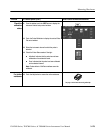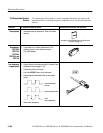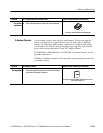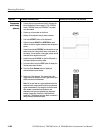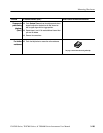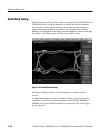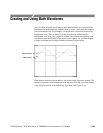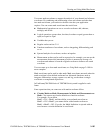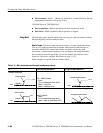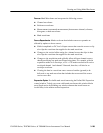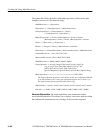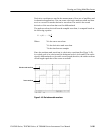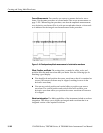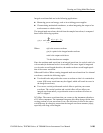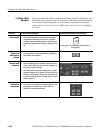
Creating and Using Math Waveforms
CSA7000 Series, TDS7000 Series, & TDS6000 Series Instruments User Manual
3- 187
You create math waveforms to support the analysis of your channel and reference
waveforms. By combining and transforming source waveforms and other data
into math waveforms, you can derive the data view that your application
requires. You can create math waveforms that result from:
H Mathematical operations on one or several waveforms: add, subtract,
multiply, and divide.
H Logical operations: greater than, less than, less than or equal, greater than or
equal, not equal or equal
H Variables that you set
H Regular scalars such as 3.14
H Function transforms of waveforms, such as integrating, differentiating, and
so on.
H Spectral analysis of waveforms, such as an impulse.
H Measurement scalars can be used in expression; for example, you can use the
measurement feature this instrument provides to measure the average of a
waveform and subtract it from the original waveform to define a new math
waveform.
You can create up to four math waveforms; see Using Math on page 3--188 for
more examples.
Math waveforms can be used in other math. Math waveforms autoscale when the
math waveform is first defined and turned on. Advanced functions, such as
integrate, differentiate, average, square root, and log, can be taken on single
waveforms or complicated expressions.
In FastFrame(CSA7000 Series & TDS7000 Series), math is applied to each
frame.
Some operations that you cannot use with math waveforms follow:
H Circular Math-on-Math, Measurements in Math, and Measurements on
Math—You cannot use circular definitions of math waveforms.
For example, if you define
Math2 = Ch1 -- Math1, and then define a second math waveform as
Math3 = Ch2 + Math2, you cannot define a third math waveform as
Math1 = Math2 + Ch3. If you do, the Math1 definition is rejected with an
error because a circular definition is not allowed.



